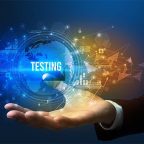Businesses are always looking for ways to retain their staff and reduce the rate of turnovers in the workplace. Employees that want to leave a current position and move on to another assignment are generally those that feel unappreciated or undervalued. These individuals will seek out positions that will help further their need to gain knowledge in the areas of technology, communication and job development.
In order to deter employees from seeking other opportunities, companies are turning to a concept known as continuous learning. This concept creates an environment of learning that is valued, encouraged and integrated into the daily operations of the job. In this culture, the mindset is that learning is a lifelong journey and employees are motivated to seek knowledge, develop new skills and share expertise.
The next question is how do employers create a culture of continuous learning? Here are a few simple steps to implement a continuous learning environment for all employees that are interested in furthering their knowledge and awareness.
- Set Learning Goals – Goals can be aligned to be integrated into existing programs and streamlined to include every employee, department and organizational level of the company. These goals can become a part of performance reviews and career pathing.
- Enable Learning for Remote Workers – Since the COVID pandemic, a large percentage of the workforce now work remotely. These workers need to have the same access to the continuous learning culture as the on-site employees. This can be achieved by utilizing e-Learning platforms, cloud-based systems, and learning portals.
- Encourage Social Learning – In addition to formalized training, businesses must provide opportunities for employees for social and independent learning. Through this interaction, employees learn to grow and support one another.
- Take Employee Feedback – When creating a continuous learning environment, it is essential to allow employee feedback. The feedback that is received will help to further the initiatives that the company is trying to develop.
- Enable Constant Learning from the Get Go – From the onboarding of new employees, the continuous learning environment should be emphasized as an important part of the culture of the organization. By providing this opportunity from the employee’s first day, the significance of the learning culture will become a part of everyday life.
- Encourage and Reward Learning – The best way to perpetuate continuous learning in the workplace is to offer incentives and rewards to those who attain goals and demonstrate commitment to the learning initiatives. Helping employees reach these goals not only aids in their advancement, but the employer gains a valuable asset to their business.
In a learning culture, employees are empowered to take ownership of their professional development, seeking out new knowledge and skills to meet the demands of their roles and beyond. The organization, in turn, provides the necessary resources and support to facilitate this journey, recognizing that investing in its employees’ growth is an investment in its own future. Such an environment fosters a sense of purpose and engagement among employees, reducing turnover rates and enhancing employee loyalty.

Software Testing Lead providing quality content related to software testing, security testing, agile testing, quality assurance, and beta testing. You can publish your good content on STL.



